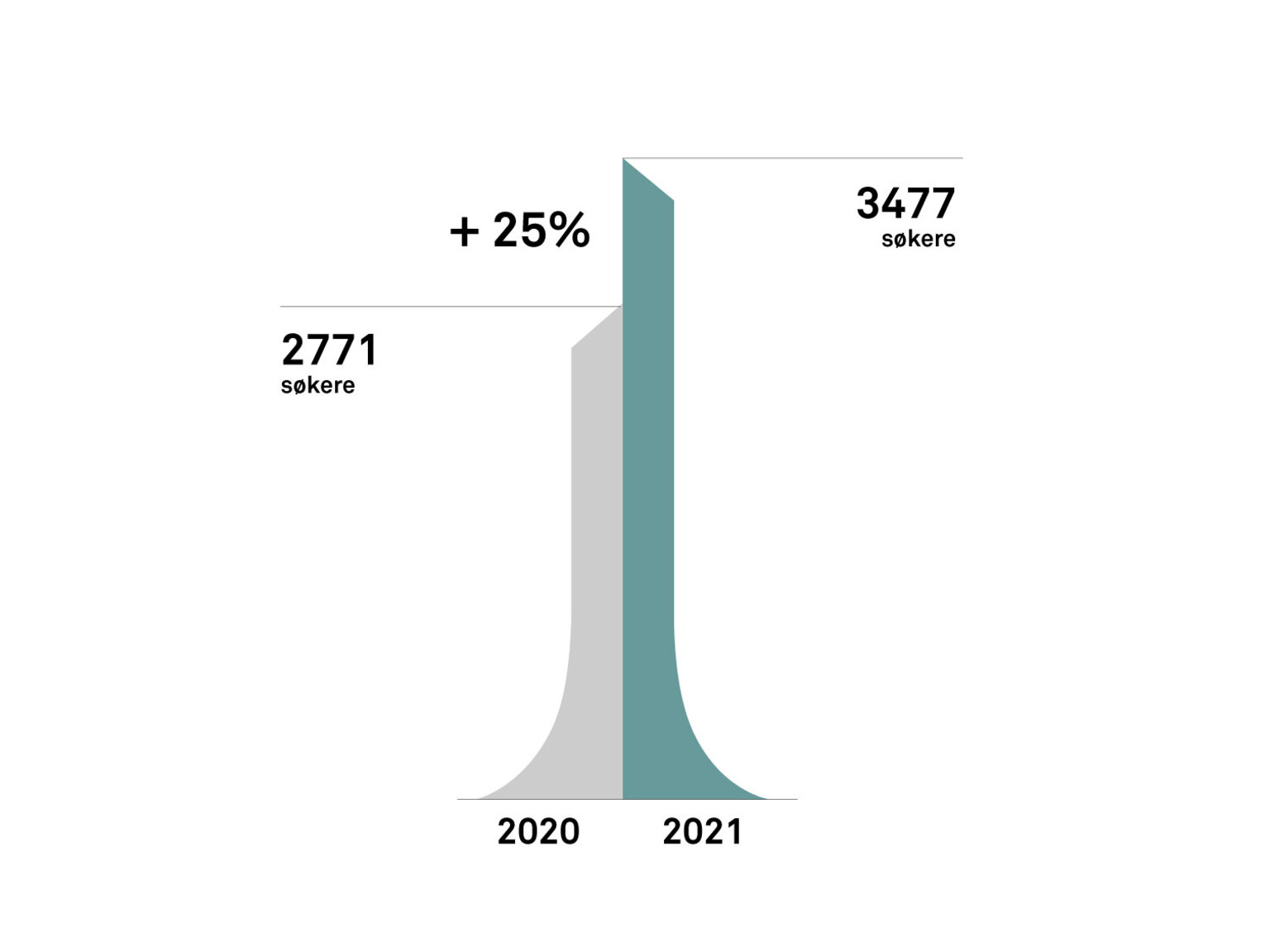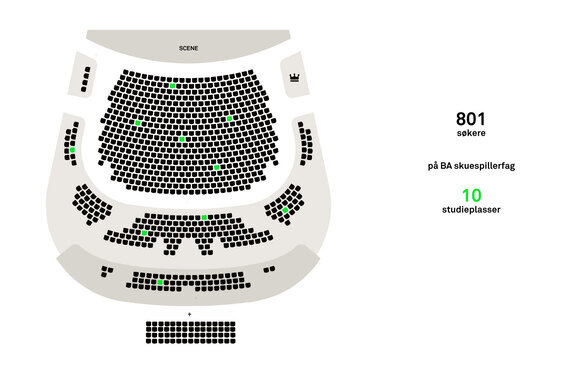
Significant Rise in Applications
KHiO’s application statistics reveal that an increasing number of students want to take a degree in the arts. The application statistics for 2021 show an increase of 25.5 per cent from the year before, and the actor education at the Academy of Theatre continues to be one of the most popular programmes in all of Norway, with over 80 applicants per available spot.
3,477 applicants, compared with last year’s tally of 2,771, represents a major increase in the number of students seeking admission to the Oslo National Academy of the Arts. The Bachelor’s programme at the Academy of Theatre, with 801 applicants competing for 10 spots, continues to be one of the most popular studies in Norway, as shown by the numbers compiled by the Norwegian Universities and Colleges Admission Service.
The Bachelor of Fine Art programme had 410 applicants in 2020 and has increased by almost a hundred applicants to a total of 505 in 2021. The application figures for the Dance department, the Art and Craft department, the Design department and the Academy of Opera were also strong this year.
Norway’s most exclusive programme?
The Academy of Theatre at KHiO has a long and outstanding history, and has for years educated actors for the stage and cinema in Norway and abroad. The dean of the Academy of Theatre, Victoria Meirik, is naturally enough pleased that the programme remains one of the most in-demand in the country. A bit over 80 applicants per available spot is a ratio no other programme in Norway can match.
“Our students are our best ambassadors, and they go on to thrive and make a name for themselves in the field of acting,” Meirik explains. “We also have an exceptionally good programme and top-notch instructors, as well as a long history. I believe this is what attracts so many applicants, along with our innovative practices. We are awfully pleased with and inspired by this interest. We also see an increase in applications from the rest of Scandinavia.”
We also have an exceptionally good programme and top-notch instructors, as well as a long history. I believe this is what attracts so many applicants, along with our innovative practices.
801 applicants competing for 10 places makes for a high hurdle to overcome. But why are so few places available?
“One of the attractive features of our programme is that we have a good deal of one-on-one tutoring,” the dean explains. “We therefore need time and focus in order to build up our tools. As a result, we can’t have too many students in the class. We’re also creating a mini-ensemble over the course of the programme’s three years, so we need space to develop all of the students together. This is why it is essential to not have too many students in the class.”
Meirik also notes that quite a few basic prerequisites must be met before a student can begin the three-year Bachelor’s programme. “A talent for being on stage is not enough and is only one of many factors within the field of acting. This means that the applicants must meet certain thresholds when it comes to aspects such as maturity, expressivity, personal suitability, and a willingness to collaborate. As a result, people sometimes have to apply several times before they finally make the cut. We are impressed and proud that applicants do persevere for years – this means we are fortunate to be allowed to educate them in the end.”
The importance of art in difficult times
The rector of the Oslo National Academy of the Arts, Markus Degerman, is also pleased with the increase. Even though it is hard to know what has caused it, he looks back at his own time as a student in the 1990s and mentions that people often seek out the arts when times are tough.
“The first half of the nineties was impacted by a profound financial crisis that paralysed much of our sense of community. Young people at the time were facing a depressed labour market and an uncertain future. One effect of this uncertainty was a rise in the number of applicants to higher education, and even though this concerned all forms of higher education, there was a particularly strong increase in applications to arts and humanities programmes.”
According to Degerman, the pandemic seems to have kindled a general interest in higher education, even as the increase in applications to KHiO suggests that art and culture are extra important in difficult times.
“Culture is the foundation of human activity, where perhaps our focus is on basic questions and values rather than such things coming as an afterthought. In that light, our over 25 per cent increase strengthens the argument that art and culture are not a kind of icing on the cake, but that quite the contrary, they are the underlying basis we keep coming back to when the decoration is gone.”
A way of thinking
The pandemic, which has damaged the entire cultural sector, has shown us that a vacuum is created when we are unable to meet one another and see plays, concerts and exhibitions together. Nonetheless, applications to the Bachelor of Fine Art programme at KHiO have increased from 410 applicants last year to 505 this year, while those to the Bachelor of Classical Ballet programme have risen from 63 to 90 over the same period.
Studying at KHiO equips you not only with your own unique, practical skills, but also with an analytical apparatus that is converted into action.
“Artistic activities are all about understanding culture, or perhaps rather cultures, through artistic practice,” Degerman says. “As such, practising art is a way of thinking.”
“Studying at KHiO equips you not only with your own unique, practical skills,” he adds, “but also with an analytical apparatus that is converted into action. On the one hand, this is so natural that it almost goes by undetected, but on the other hand it is the understanding of your own practice that develops your skills.” Degerman contends that this is a part of higher education that should be emphasised more strongly, and that thinking across sectors – and not only across disciplines – is vital.
Download the application statistics (Excel file)

